11 tips to open Local Group Policy Editor on Windows
Local Group Policy Editor allows power users to control a large number of settings in Windows. 
Where is the Local Group Policy Editor in Windows?
Local Group Policy Editor is a tool aimed at Windows power users. You can find more information about how to use this tool in this article: How to use Local Group Policy Editor to fine-tune your computer.
If you try the methods below and Local Group Policy Editor does not display, you may have a version of Windows that does not come with this tool. By default, you can only find this editor in:
- Windows 11 Pro and Windows 11 Enterprise
- Windows 10 Pro and Windows 10 Enterprise
- Windows 7 Professional, Windows 7 Ultimate and Windows 7 Enterprise
- Windows 8.1 Professional and Windows 8.1 Enterprise
Although the process is not mentioned in this article, there are ways to install Local Group Policy Editor on Windows Home versions. If you don't know your Windows version, read this guide: Determine the Windows version on your system.
NOTE : This article refers to Windows 11 and Windows 10. However, many of the methods described below may also apply to older versions of Windows.
How is editing a system-wide policy different from editing a policy for a specific user or group?
If you have other users on your Windows computer (for example, other family members), you can control what kinds of changes they can make and what applications they can run. Before opening the Local Group Policy Editor, you first need to decide whether you want the changes to apply to all users (including yourself) or only to specific users or groups of users (for example, non-administrator) on the computer in question. The process for opening Local Group Policy Editor will vary, depending on your goals.
First, let's see how you can open the editor if you want to apply changes to all users.
NOTE : You need admin rights to access Local Group Policy Editor. If you try to open it as a regular user you will get the following error:
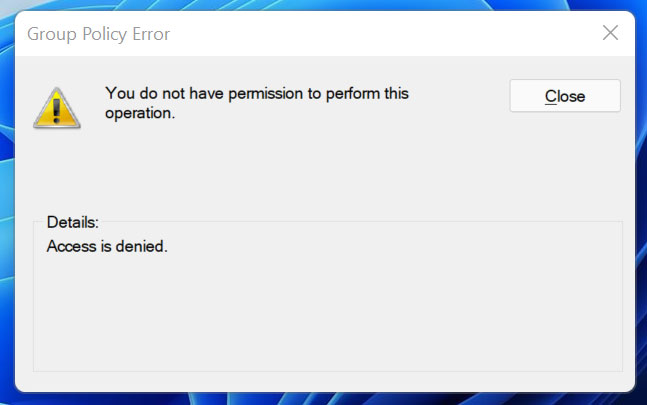
How to open Local Group Policy Editor on Windows to change settings for all users
Here are ways to open Local Group Policy Editor on Windows:
1. Open Local Group Policy Editor by running the command

WinFirst, press the + key combination Rto open the Run dialog box, then enter gpedit.msc into the Run window and select OK .
You may receive a UAC prompt. Select Yes and Group Policy Editor will launch.
2. Open Local Group Policy Editor via Command Prompt or Power Shell
Step 1:
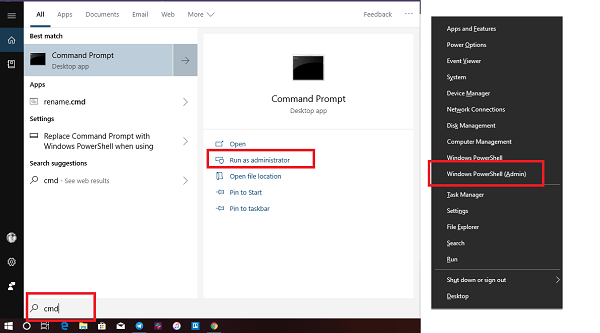
Open Command Prompt with admin rights:
WinPress the + key combination R to open the Run dialog box, then type cmd into the Run dialog window. Right-click on the result and select Run as Administrator to open Command Prompt with admin rights.
Or open Power Shell with admin rights:
Press Win+ Xand select Windows PowerShell (Admin).
Step 2:
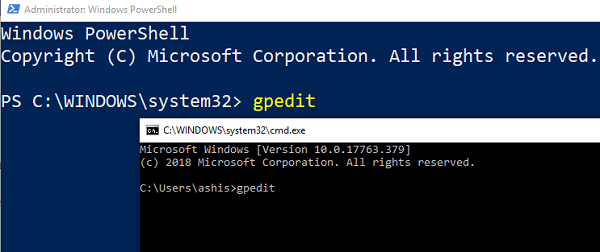
Now the Command Prompt/Powershell window will appear on the screen, enter gpedit in the window and GPE will open in a few seconds .
3. Open Group Policy Editor on the Search frame
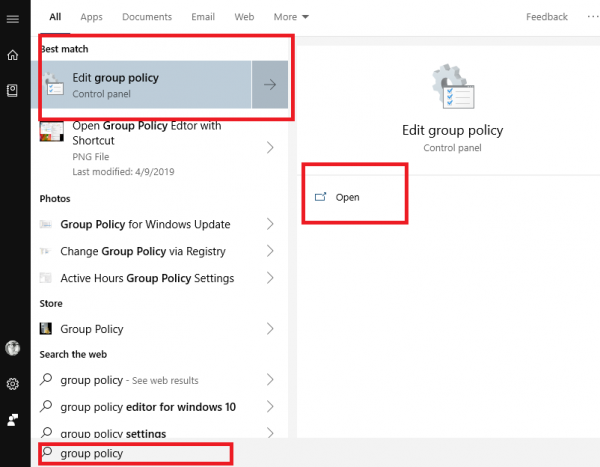
Step 1: Press the button Winto open the Start menu.
Step 2 : Enter ' group policy '.
Step 3: Policy editor results will be listed.
Step 4 : Click Open to open Group Policy Editor.
4. Use the Group Policy shortcut

If you use Local Group Policy Editor regularly, it is best to create a shortcut on the desktop and even assign a hotkey to it.
Step 1: Navigate to C:WindowsSystem32
Step 2 : Search for ' gpedit.msc '.
Step 3 : When the result appears, right-click on it and select Create a shortcut.
Step 4: Click Yes when prompted that shortcuts can only be created on the desktop.
Step 5: Next time you want to open Local Group Policy Editor, just double click on the shortcut to launch it.
You can also assign a hotkey to Local Group Policy Editor and can start it with a key combination.
5. Open Group Policy Editor via Control Panel
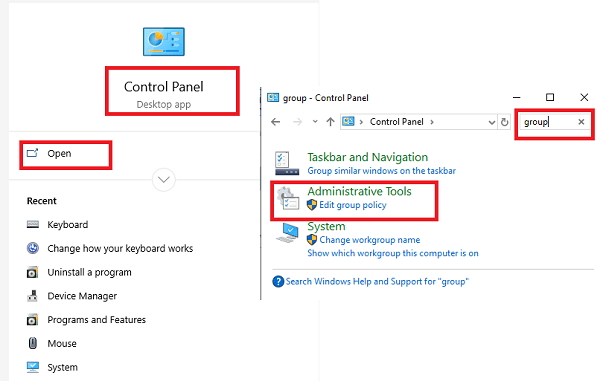
Step 1 : Open the search bar and enter control.
Step 2: The results will display Control Panel. Click this result to open Control Panel.
Step 3 : In the search box at the top right, type 'group'.
Step 4 : Find Administrative Tools > Edit group policy.
Step 5 : Click to launch Local Group Policy Editor.
This method is very useful for people who use Control Panel to manage almost everything on the computer.
6. Open Group Policy Editor via Settings

Step 1: Open Windows Settings.
Step 2 : Enter Group Policy and GPE will appear.
Step 3 : Click on the result and the Local Group Policy Editor will be opened.
7. Pin Local Group Policy Editor to the Taskbar or Start menu
If you regularly use Local Group Policy Editor, you can pin it to the Taskbar or Start menu, but first, you need to create a shortcut for this tool (as in part 4). After creating the shortcut, in Windows 11, right-click or tap and hold the icon. Next, access the old right-click menu by selecting ' Show more options '. Then click or tap either action, depending on what you want to do.
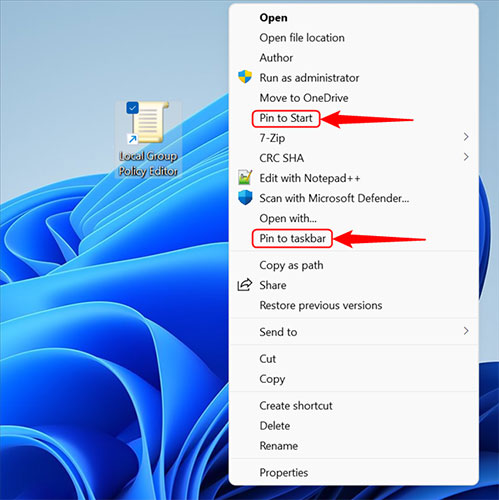
In Windows 10, since the classic right-click menu is the default, just right-click (or press and hold) on the shortcut and select Pin to Start or Pin to taskbar .
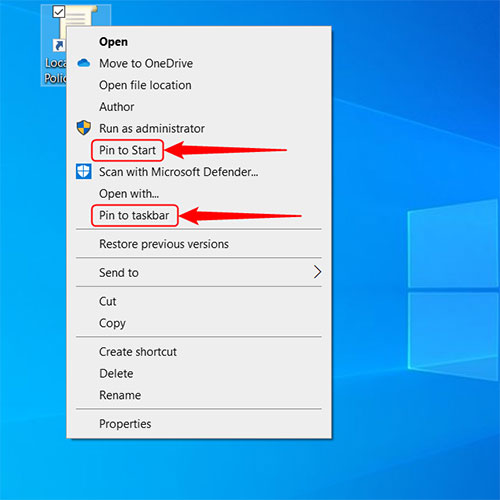
From now on, you can open Local Group Policy Editor from the Start menu or Taskbar.
8. Open Local Group Policy Editor using Task Manager
You can open Local Group Policy Editor using Task Manager. Launch Task Manager (a quick way to do that is to press Ctrl + Shift + Esc on the keyboard). If you see Task Manager's compact interface, tap More details in the bottom left corner. Next, open the File menu and click 'Run new task' .

Now, enter gpedit.msc in the Open field of the 'Create new task' window . Press Enter or OK to run the command.

9. Open Local Group Policy Editor using File Explorer
File Explorer from Windows 11 and Windows 10 is another convenient way to start Local Group Policy Editor. Just open File Explorer, then type gpedit.msc in the address bar and press Enter on the keyboard.
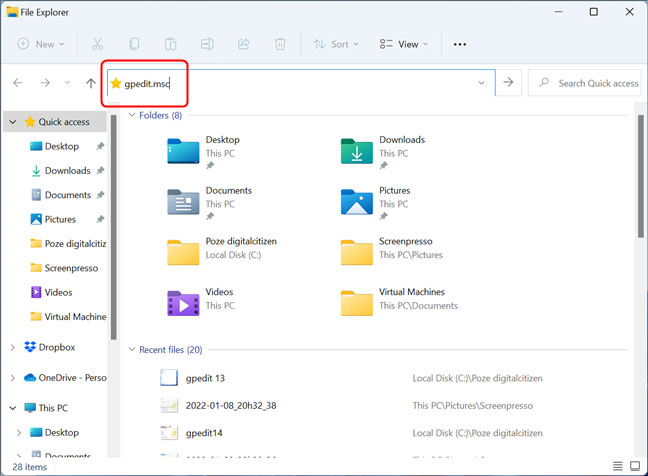
10. Open Local Group Policy Editor by running its executable file
On both Windows 11 and Windows 10, the Local Group Policy Editor executable file is found in the System32 subfolder of the Windows folder. Navigate to 'C:WindowsSystem32' and find a file named gpedit. If you hover your mouse pointer over the file, its description should be 'Microsoft Common Console Document' . Once you have located the correct file, double-click it.

11. Open Local Group Policy Editor using batch file
If you don't want to download an external file, you can create your own batch file and use it to activate Group Policy Editor.
1. Enter Notepad in Windows Search.
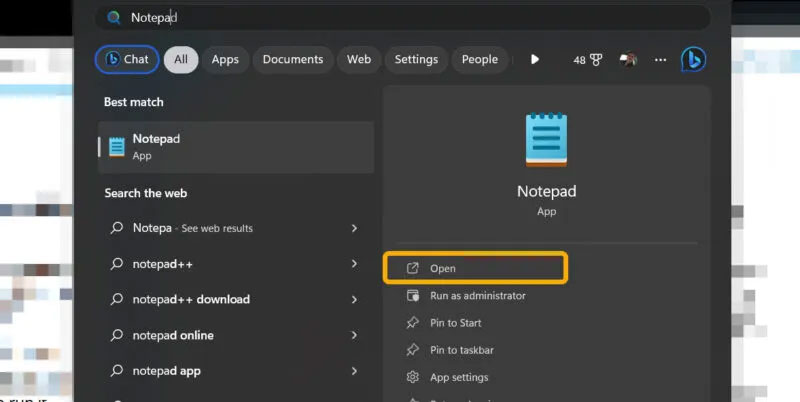
2. Copy the next text into the file and make sure to paste it by pressing Ctrl + Alt + V to remove any formatting.
@echo off pushd "%~dp0" dir /b %SystemRoot%servicingPackagesMicrosoft-Windows-GroupPolicy-ClientExtensions-Package~3*.mum >List.txt dir /b %SystemRoot%servicingPackagesMicrosoft-Windows-GroupPolicy-ClientTools-Package~3*.mum >>List.txt for /f %%i in ('findstr /i . List.txt 2^>nul') do dism /online /norestart /add-package:"%SystemRoot%servicingPackages%%i" pause 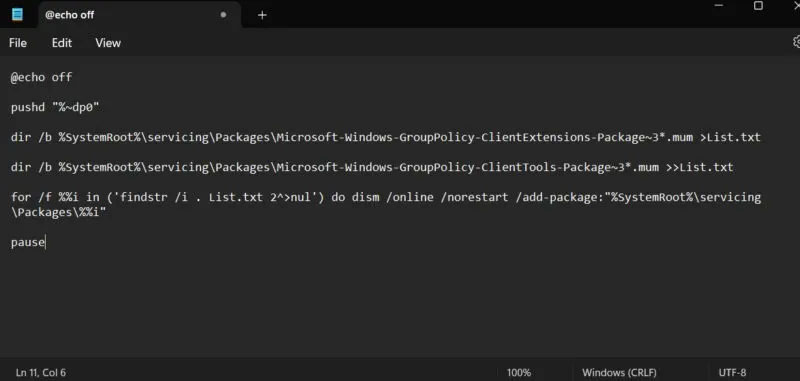
3. Click File > Save As and name the file 'GPEdit.bat' to save as a batch file.
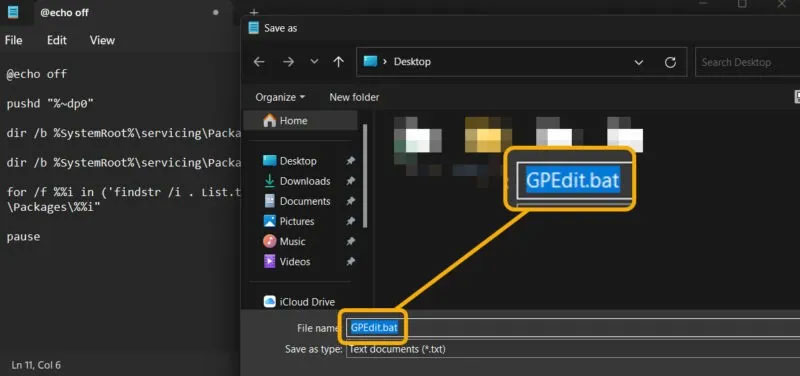
4. Locate the newly created file and right-click on it, then select Run as Administrator .
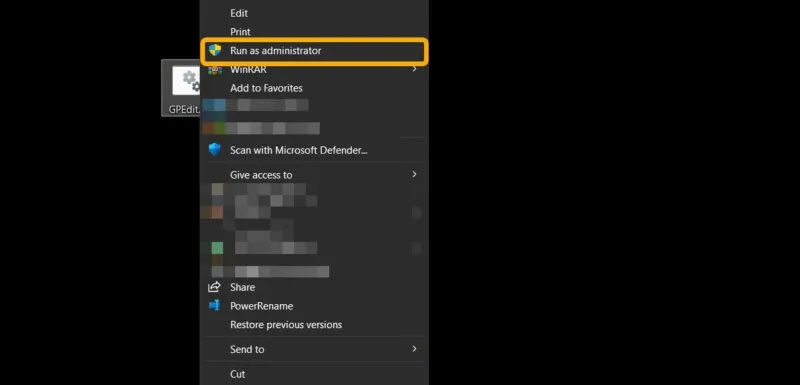
5. CMD will open and start applying edits.
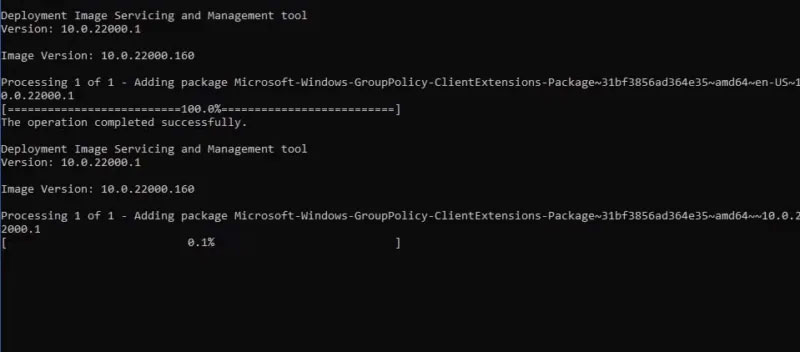
Good luck!
You should read it
- How to use Local Group Policy Editor to tweak your computer
- Cannot open Local Group Policy Editor, quick fix
- How to install the Microsoft Edge Group Policy template on Windows 10
- Fixed an issue that could not replace Windows 10 desktop wallpaper with Group Policy
- How to apply Local Group Policy to specific user accounts in Windows 10/11
- 6 Group Policy Editor tweaks help improve security
 How to view source, view website source code by phone or computer
How to view source, view website source code by phone or computer Instructions for activating Google Messages black background
Instructions for activating Google Messages black background Why do websites think you are a robot when using a VPN?
Why do websites think you are a robot when using a VPN? After Apple, Samsung became the next company to block sideload applications
After Apple, Samsung became the next company to block sideload applications TikTok introduces a Shazam-like feature that allows you to find songs by humming the melody
TikTok introduces a Shazam-like feature that allows you to find songs by humming the melody 3 methods to use NTFS drives on Mac
3 methods to use NTFS drives on Mac